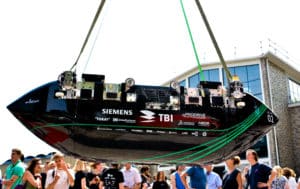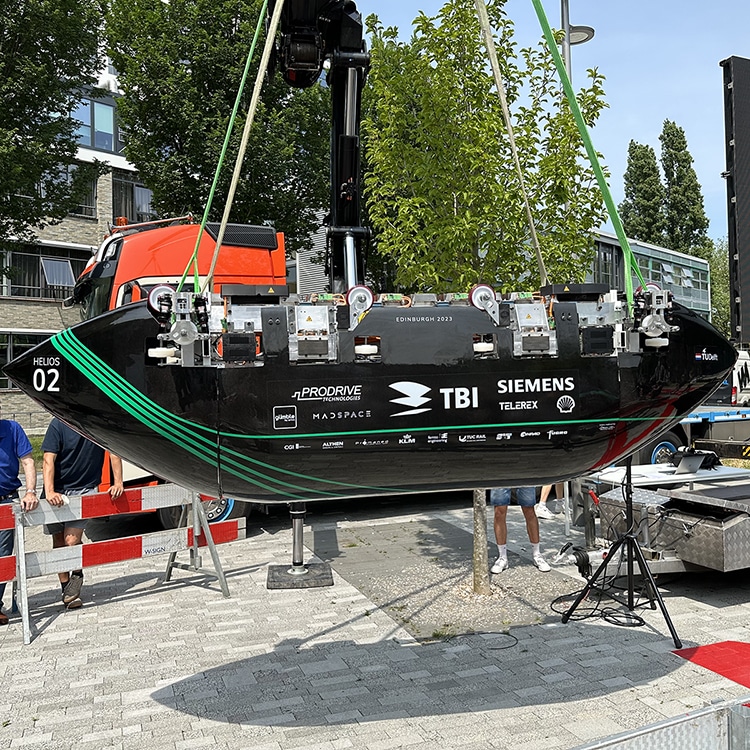Read more about Agri Automation? Enter your e-mail address here and you will receive the PDF.
Delft Hyperloop aims for victory with a revolutionary design
Delft Hyperloop is battling for the top spot at the European Hyperloop Week (EHW) in Edinburgh. This week (from July 17th to 23rd), a student team of 40 members is competing for the “Complete pod design award,” the prize for the best overall hyperloop system.
The bar is set high. Last year, the student team from TU Delft took home the grand prize and the innovation award. Most team members put their studies on hold for a year to work full-time on this complex challenge. “It’s an innovative and very interesting project to be a part of,” said Joris van Liempt, account manager at Eltrex Motion. “The students from different disciplines come together to form a multidisciplinary team in a short period, pushing boundaries and achieving new innovations.”
Hyperloop - the transport of the future
The hyperloop is envisioned to become the fifth leading mode of transportation after the car, train, plane, and boat. It is a super-fast and environmentally friendly transportation system where a levitating “pod” is shot through a near-vacuum tube. Due to the low resistance in the tube, speeds of over 1000 kilometers per hour are possible. A journey from Amsterdam to Paris would take only half an hour with the Hyperloop.
Fully levitating pod
Last year’s team worked on the development of a fully levitating pod, a crucial step in completing the Hyperloop concept. Team captain Umika Bhagole explains the three innovation steps taken by the “Dreamteam”: “We have developed a fully levitating solution and implemented the motor in a way that has never been done before. Since the motor is on the pod, there is more electronics on board that cannot withstand a vacuum. We solved this with a vacuum box equipped with a heat management system.”
During the EHW, the teams will be evaluated on robustness, energy efficiency, and the scalability of their designs. The team has also taken steps to update and improve the old design, “Helios I,” as it was not cost-effective enough for potential scaling. Therefore, they have chosen a different type of motor, which is integrated into the pod rather than in the track.

Revolutionary
The “Dreamteam” will conclude the competition in Edinburgh this week with a practical demonstration of the levitating Hyperloop: one run in both directions (forward and backward) and one run at top speed, including an emergency stop. The design has undergone extensive testing to prepare for this moment. Eltrex Motion has supported the team by providing technical advice on the new onboard motor that controls the pod. Additionally, linear bearings from PBC Linear were used to test the linear flux switching permanent magnet motor. “The bearings provide guidance and stability during motor testing,” says Martin van den Berg, product manager Mechanical at Eltrex Motion. “This is crucial for optimizing the motor’s performance. Hopefully, this new innovation will contribute to the victory of the Delft Hyperloop team.”

